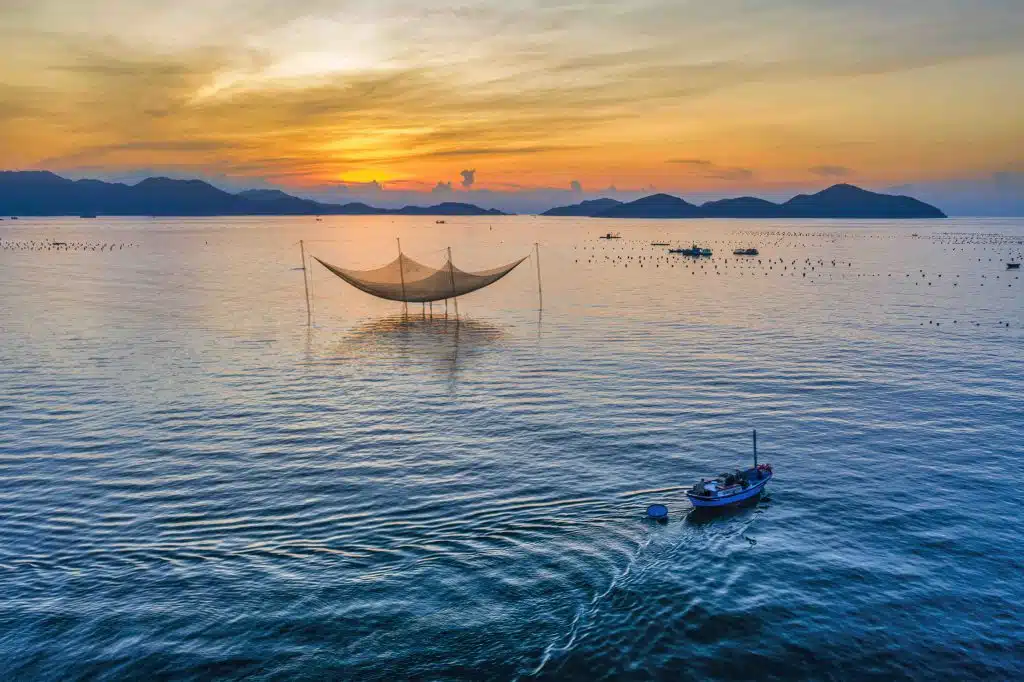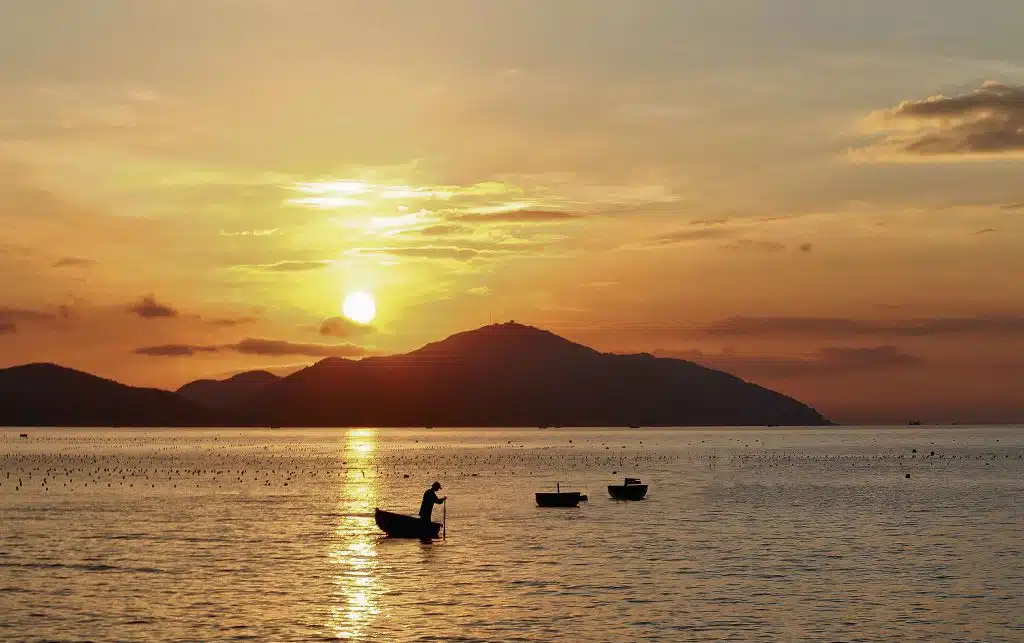Story: Nam Hoa
Photos: Tonkin
Located at the southern tip of Khanh Hoa province, approximately 80 kilometers from Nha Trang, Cam Ranh Bay is a deep-water bay blessed with favorable terrain and geography. It has long been a crucial area for the development of fisheries, tourism, and especially national defense.

Cam Ranh Bay is encircled by Cam Nghia Peninsula, which forms a protective arc to the northeast, while Binh Ba Island guards the east. Meanwhile, the Binh Lap Peninsula, resembling a rhino horn, juts out from the south, dividing Cam Ranh Bay into two halves: the inner secluded bay (to the west), with a narrow entrance known as Cua Hep, formed by Sop Point northeast of Binh Lap, and Hon Lang Point southwest of Cam Nghia; and the outer bay (to the east), smaller yet tranquil, deep, and sheltered, bordered by Binh Lap, Cam Nghia, and Binh Ba Island, opening to the East Sea via Cua Lon to the southeast and Cua Be to the east.
While technically a peninsula, Binh Lap is almost as isolated as an island due to its unique position extending into Cam Ranh Bay. Reaching Binh Lap by land requires a circuitous route: heading south from Cam Ranh city, then turning towards the sea and looping back north. Consequently, residents of Binh Lap usually travel to the mainland by boat, which is more convenient. Due to these logistical challenges, Binh Lap has preserved its pristine nature.

Upon traversing the steep incline of Provincial Road 702 and crossing Nuoc Ngot Bridge into Binh Lap, we felt as though we were entering another world. The narrow road winds up and down through rocky hills and low shrubs, with no houses or signs of human life after about five kilometers. As we ventured deeper onto the peninsula, we arrived at an inhabited area, considered the central region of Binh Lap, where several homestays and eateries nestle in a small valley between two low mountains.
This relatively flat and narrow area is almost in the middle of the “rhino horn”: to the west, a small U-shaped bay nestles into the island, and to the east is Bai Ngang (Binh Lap’s main beach), a gently curving stretch of white sand hundreds of meters long, facing Binh Ba Island and Cua Lon in Cam Ranh Bay. Protected from the elements, the sea here is as clear and calm as jade. Oyster cages float beneath the surface, anchored by buoys, arranged in straight lines like green train cars laden with treasures from the sea. Interspersed with seafood farming rafts, they resemble sea stations. Fishermen’s boats and coracles bob on the crystal-clear water, looking like lively, beautiful toys when viewed from above.

Binh Lap exudes simple, peaceful beauty. Visitors are enchanted by pristine beaches like Bai Ngang, Bai Ran, Bai Con, and Bai Robinson, with fine white sand and clear water where schools of fish swim joyfully. Bai Robinson captivated us with its tranquility. Waves gently lapped the white sand, surrounded on three sides by mountains and forests, with the vast blue sea and white clouds stretching to the horizon. The serene and secluded scenery matches the beach’s name.
Cam Ranh Bay is home to lobsters, oysters, and many other types of seafood. Camping by the beach, enjoying freshly caught seafood, stargazing, and listening to the soothing sounds of the waves, one realizes that paradise isn’t far away.
As dawn broke over the sea, casting a golden glow on the clouds, with the distant mountains of Cam Nghia still shrouded in darkness, we climbed a low hillside, mesmerized by the green boats crisscrossing the sea and the giant fishing nets being slowly lifted, their mesh glinting, heavy with the ocean’s bounty. As the sun rose higher, a few small boats carrying tourists skimmed across the sea, tracing graceful white arcs of foam like dancers on a blue stage. The scenery was breathtaking!
This relatively flat and narrow area is almost in the middle of the “rhino horn”: to the west, a small U-shaped bay nestles into the island, and to the east is Bai Ngang (Binh Lap’s main beach), a gently curving stretch of white sand hundreds of meters long, facing Binh Ba Island and Cua Lon in Cam Ranh Bay. Protected from the elements, the sea here is as clear and calm as jade. Oyster cages float beneath the surface, anchored by buoys, arranged in straight lines like green train cars laden with treasures from the sea. Interspersed with seafood farming rafts, they resemble sea stations. Fishermen’s boats and coracles bob on the crystal-clear water, looking like lively, beautiful toys when viewed from above.
We left Binh Lap with a sense of regret. My rugged companion, suddenly inspired, recited:
Cam Ranh Bay boasts four “Binh”
Together guarding the land, inside and out:
Binh Ba watches the ocean gate
Binh Hung secures the southern skies
Binh Tien leans on the mountains, silently vigilant
Binh Lap guards the entrance, steadfast for a thousand years.










